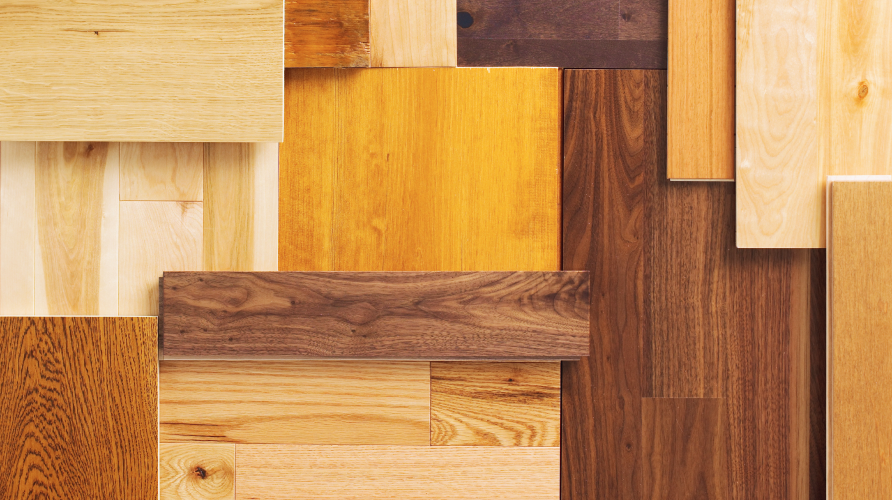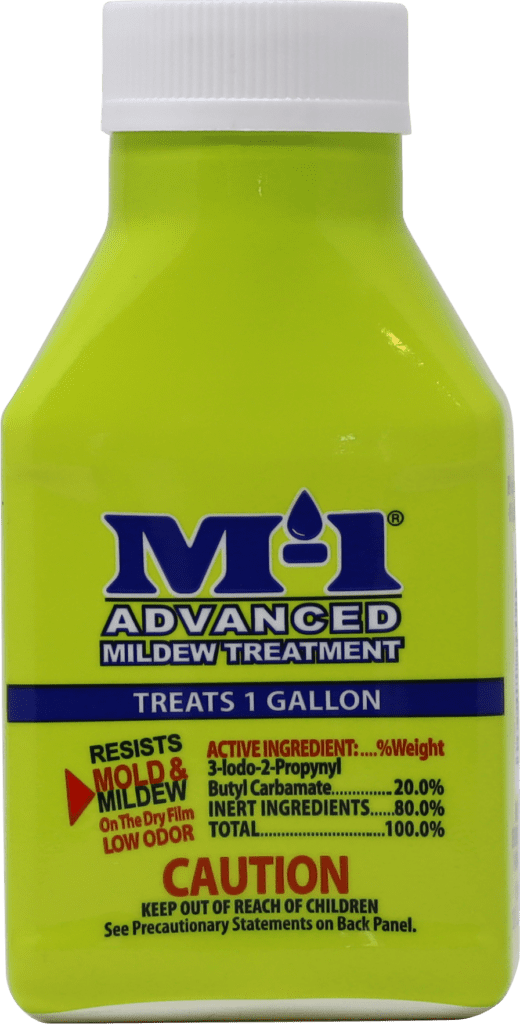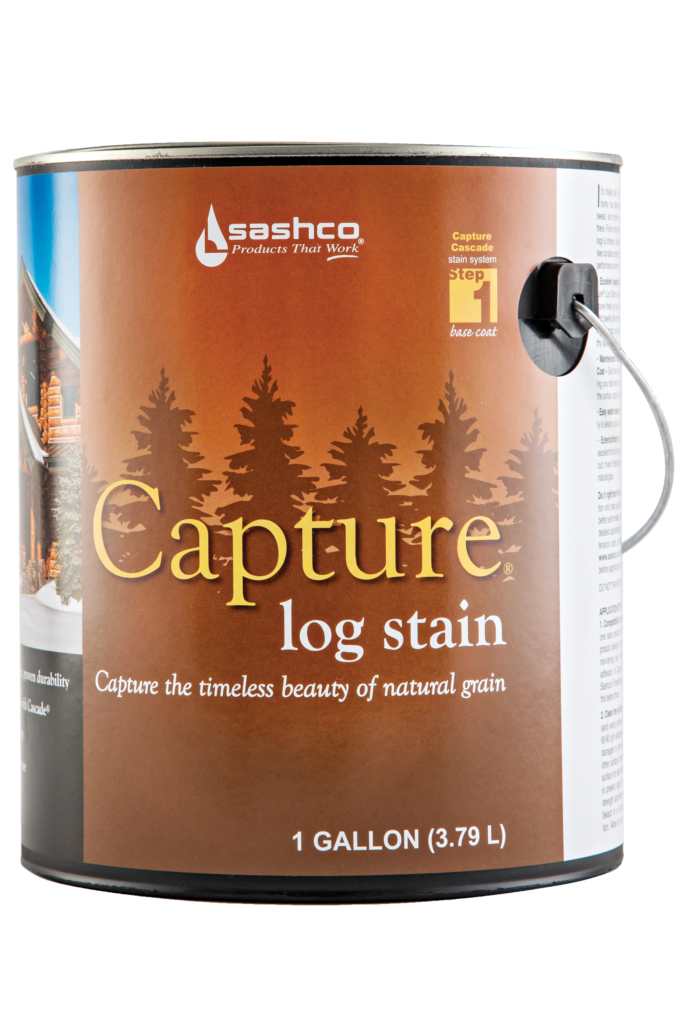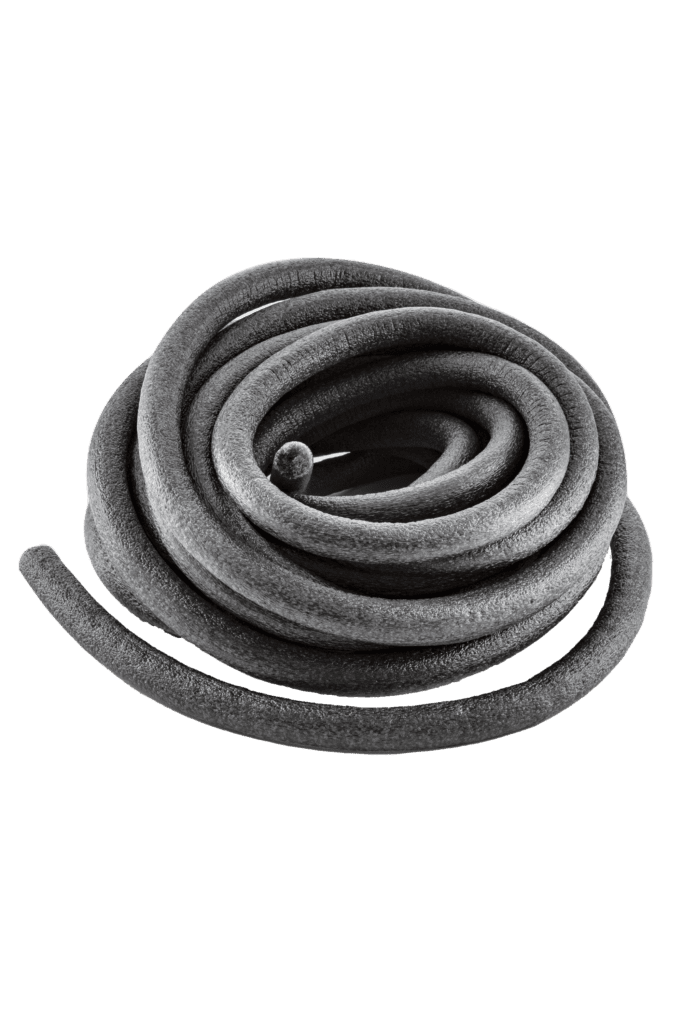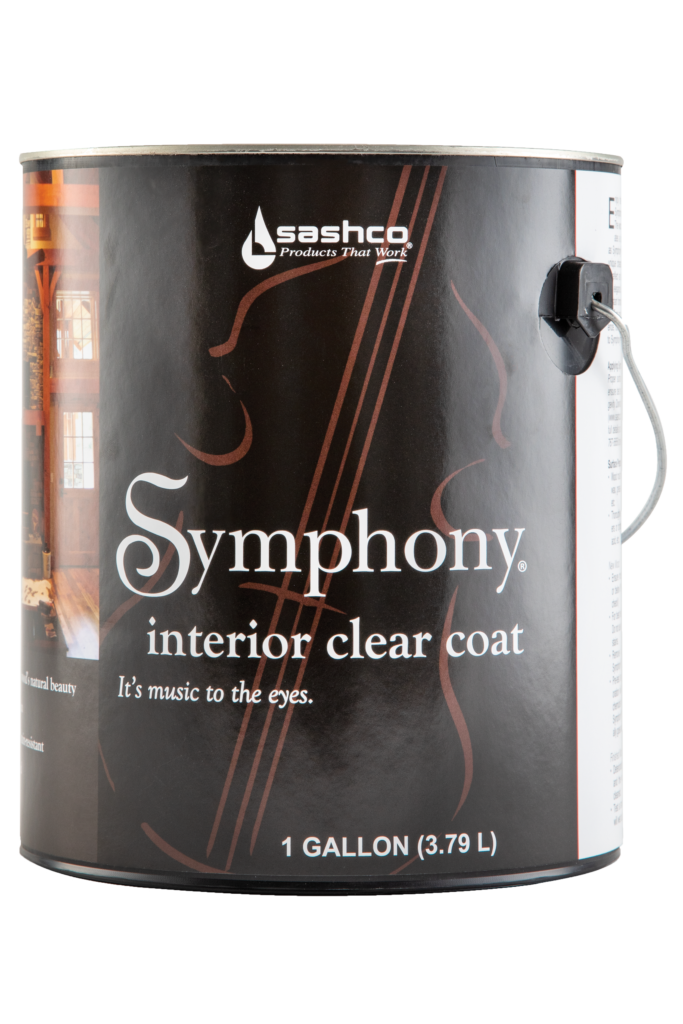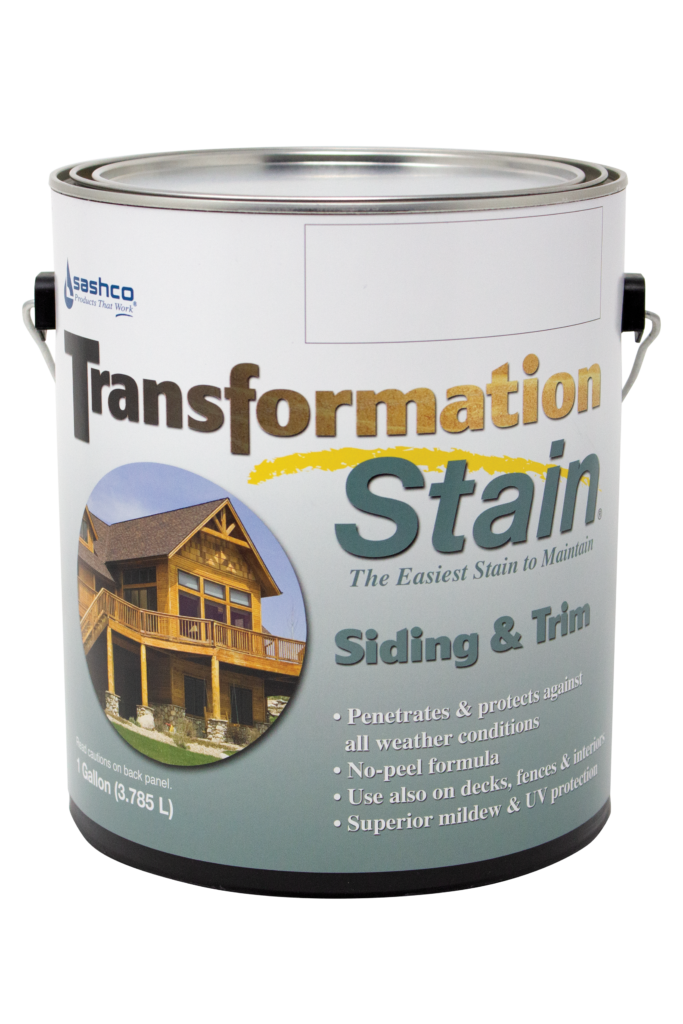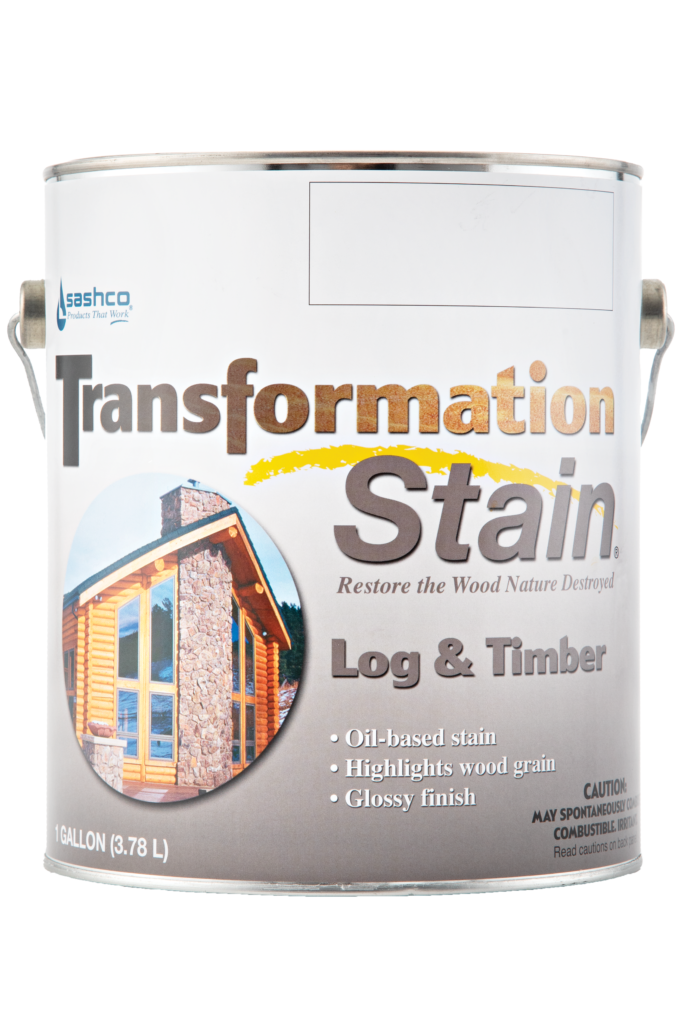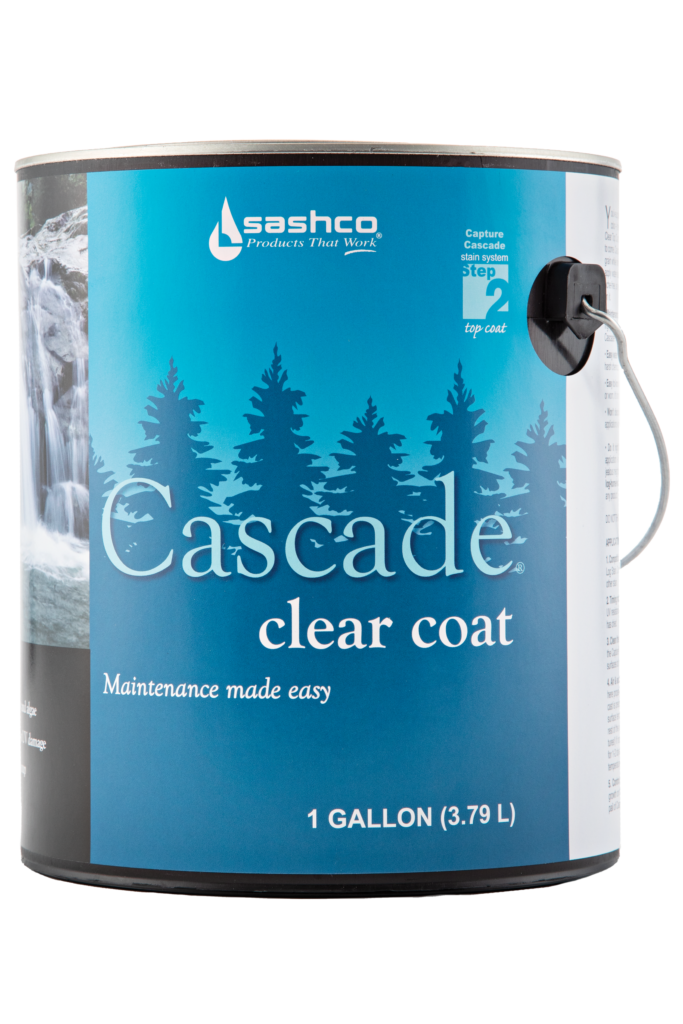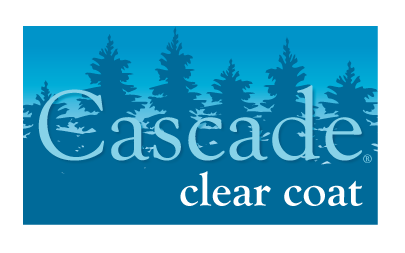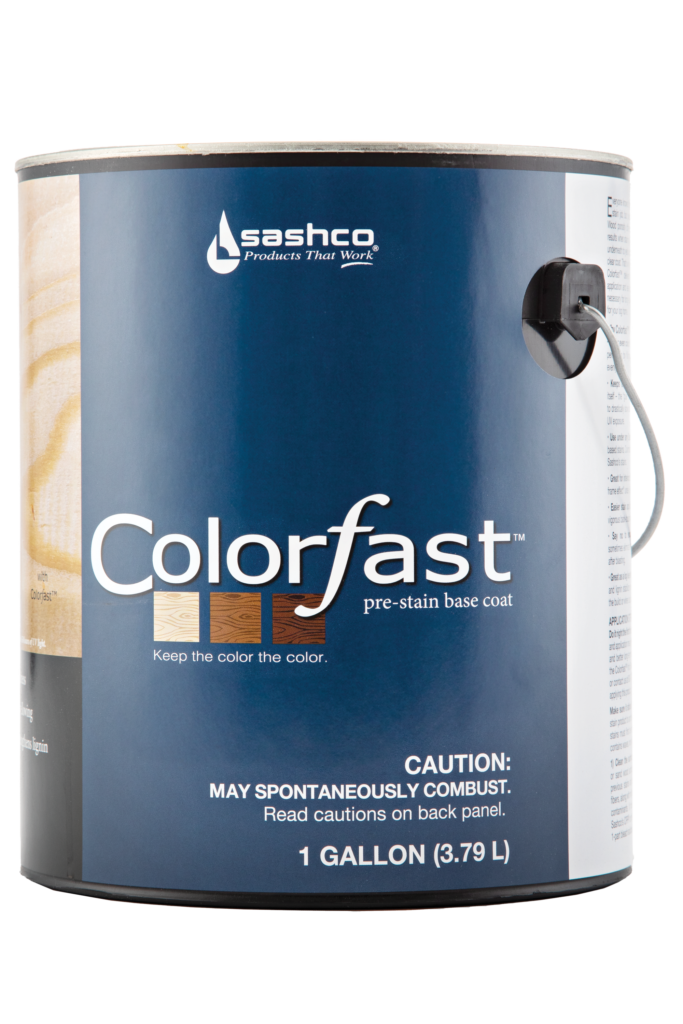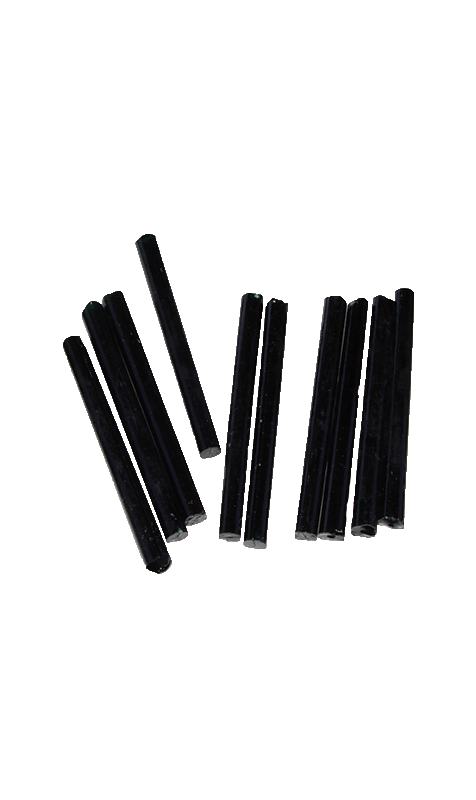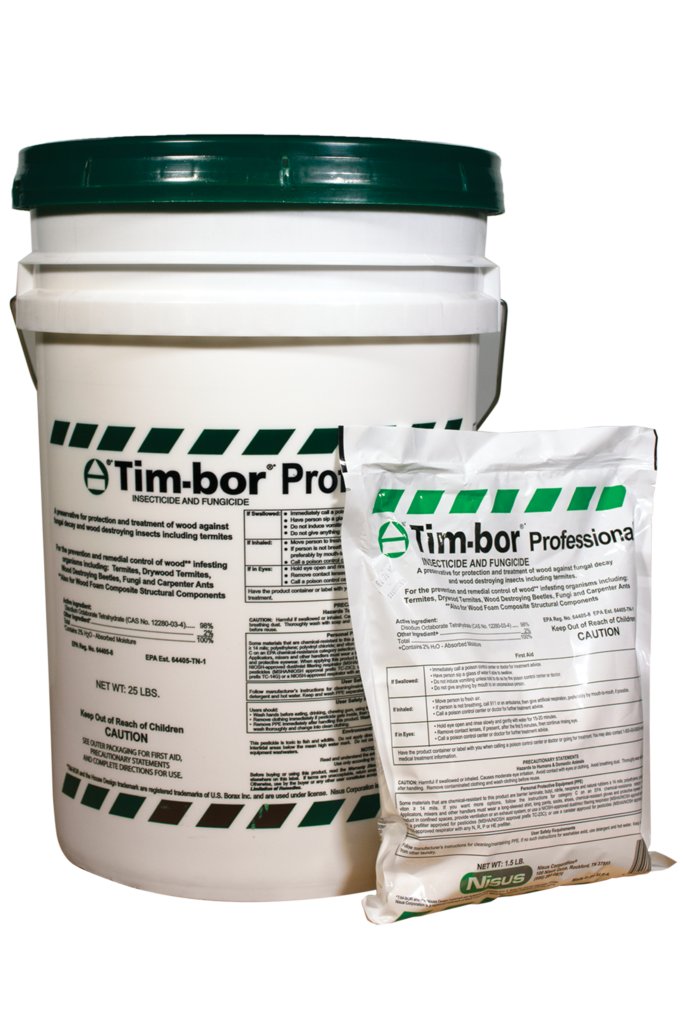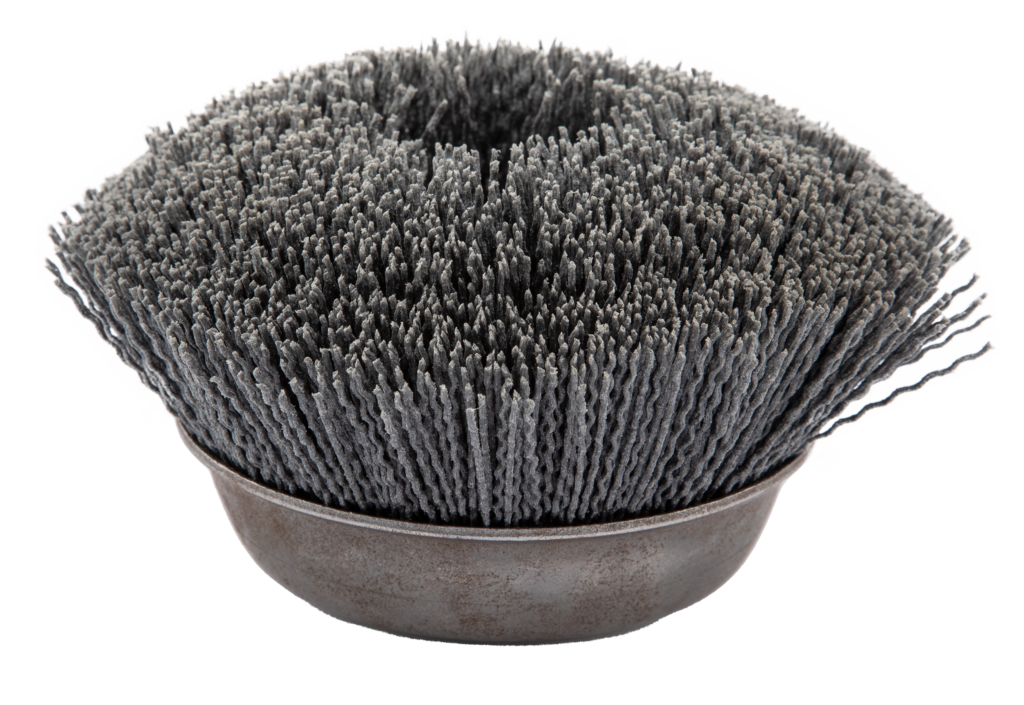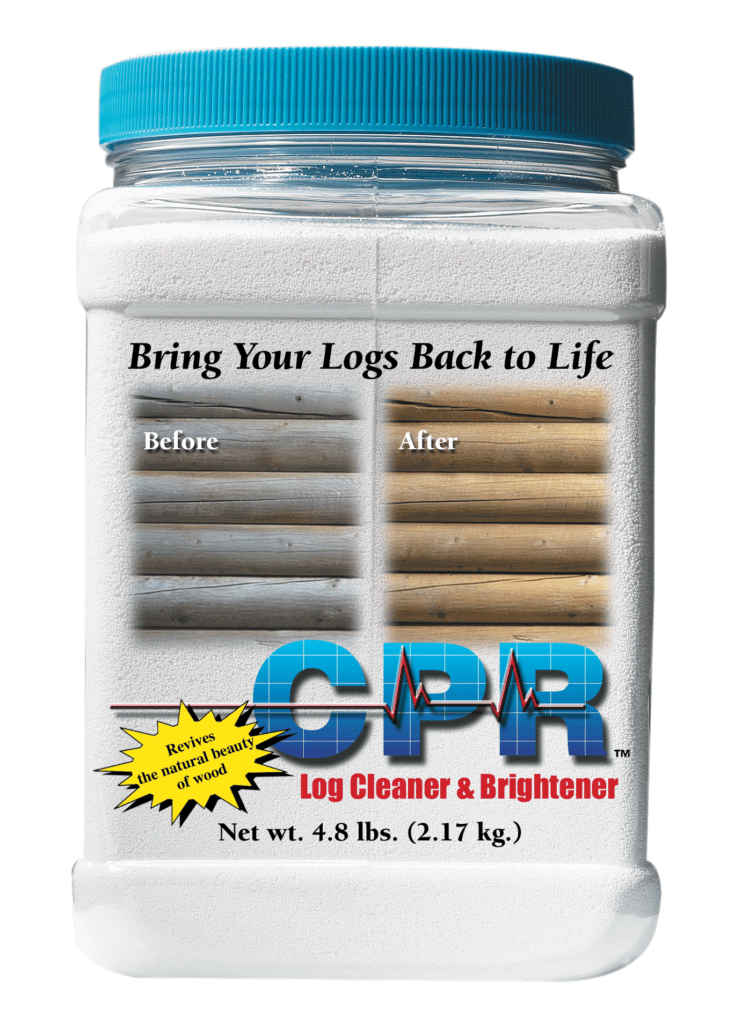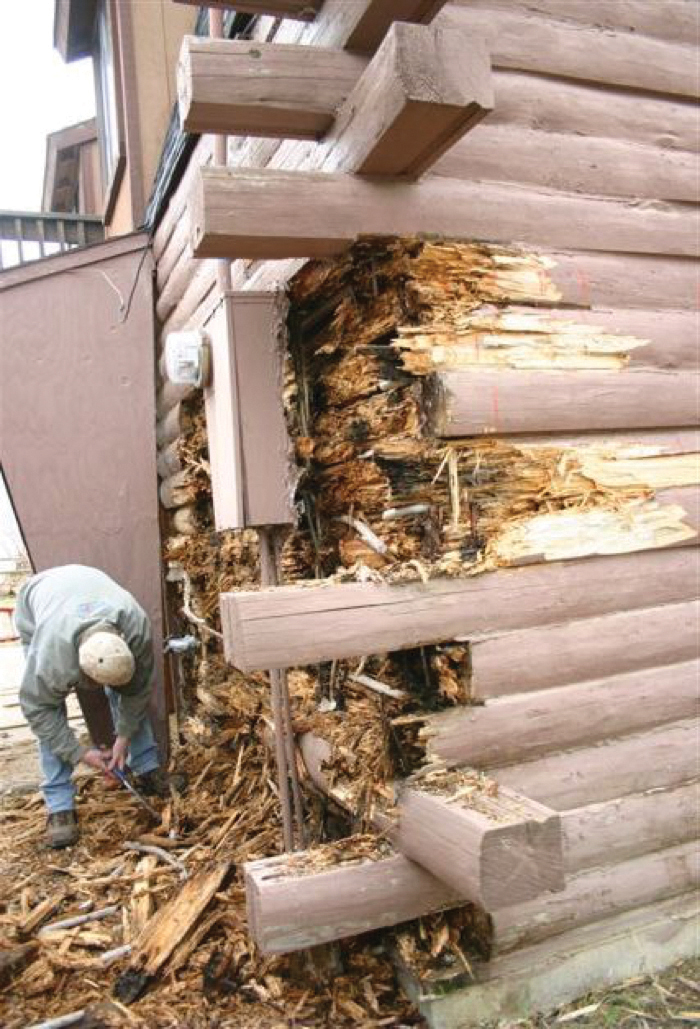
Staining vs. Painting Your Log Home Exterior: Which is Better?
Overview
Technical Report | The Role of Coating Breathability in Preventing Rot in Log and Timber Structures
We’ve got all the answers to your questions about whether it’s better to paint or stain a log home.
It’s common knowledge that moisture trapped in wood will, over time, lead to rot. Because significant rot can lead to tens of thousands of dollars in repairs, it’s imperative to use a coating (stain, paint, varnish, etc.) that will both prevent most moisture from getting into wood in the first place, and also provide an escape route for moisture that does get into the wood. Voices on the internet and elsewhere would tell you that this has more to do with the breathability of the coating itself. Breathability is important, because no matter how carefully built, properly stained, or well-maintained a structure is, some liquid water will eventually get past the outer defenses and into a building. But the breathability of a coating is not the primary factor in preventing rot. So, what is?
Inside
- A discussion about the breathability of water-based stains and paints, as well as certain types of oil-based stains
- Why breathability of stain or paint is not the primary factor in prevention of rot — elasticity is
- Visibility of the wood underneath stain or paint is necessary in order to inspect and catch potential problems early on
- Review of the general breathability of different types of coatings (paint, stain, urethane, etc.)
Effects of Water on Logs and Timbers
On any log or timber structure, liquid water from many sources — dew, rain, runoff, backsplash, snow, ice, sprinklers, cleaning, etc. — will get onto the surface of the wood. Once on the surface, that water will soak into the wood, unless a good stain or coating is there to block it. Bare wood, weathered wood, weathered or failing stains and coatings, joints, fasteners, insect holes, and — perhaps especially — unsealed cracks and checks are all excellent places for liquid water to get past the coating and into the wood. Once in the wood, the liquid water will naturally soak deeper into the wood.
As liquid water inside the wood evaporates, it expands dramatically. One teaspoon of water will expand about 1600 times to become approximately two gallons of water vapor! When that happens slowly, in cool weather or shaded areas, those forces aren’t too destructive, as the vapor has plenty of time to find a way out of the wood without doing much damage. However, when the liquid water turns to vapor quickly and the escape paths are limited, damage can occur. This often happens when a dampened log is exposed to full sunlight. The increasing water vapor pressure underneath the coating will literally push the coating off the wood as it tries to escape, as shown in the photo above. The resulting damage to the adhesion of the coating is the beginning of the peeling process. The more breathable a coating is, the easier it can relieve this back pressure by allowing the water vapor to pass through it with minimal or no damage.
The most common way to address the problem of water is to apply a coating that forms a continuous film on the surface, keeping most of the water from getting in, while making sure that it is breathable enough so that water vapor can escape with minimal or no damage. The vast majority of wood stains on the market are intended to perform this way.
The first job of a coating: Keep Water OUT!
Shedding liquid water is the first line of defense against rot. Keeping the underlying wood dry simply makes sense. Disappointingly, most commercially available stains and coatings are simply too hard and brittle to do this effectively. Logs and timbers expand and contract and twist and crack with changes in temperature and humidity, and as they relieve internal stresses. A brittle, hard coating applied on top of this constantly-moving wood simply can’t keep up with the movement. The result is cracks in the coating itself that usher water directly to the wood. Over time, this leads to cracks in the wood itself, as shown in the photo above, which allows even more moisture in. An elastic, or at the very least flexible, coating can move with the wood far better, maintaining a barrier to liquid water for much longer. Sashco makes Transformation Stain® Log and Timber to be as flexible as an oil can be, and Capture® Log Stain to be hyperelastic.
The second job of a film forming stain: Let Water OUT!
You read that right: breathability is the second line of defense, but it’s a bit more complicated than just the breathability of the stain itself. All of the following factors also affect the overall breathability of logs and timbers: wood species, density, texture, wood prep, any previous stains applied, cleaning chemicals or preservatives in the wood, penetration or non-penetration of the first coat, the amount or thickness of the stains or coatings, the number of coats applied, and more. In such complicated systems, we simply aim for minimal to no damage as the stain weathers.
Other Ways of Addressing the Problem of Water
The less common way of addressing the problem of water is to make a super-breathable stain or coating that vapor just passes right through. An eroding alkyd, an “oil-in-water” system (often referred to as a “hybrid” stain), quickly micro-fractures and ages into tiny flakes. Water soaks right into the wood, but also evaporates right back out just as easily. The micro flakes erode away instead of peeling. This type of stain needs to be reapplied every couple of years, but extensive prep is usually not necessary. Stains like these are ideal for decks and fences. Sashco’s Transformation Stain® Siding and Trim falls into this category.
Another way to accomplish super-breathability is by using a non-drying oil as the main component of the stain. Unfortunately, these stains are incompatible with sealants and chinking, keeping these products from adhering to surfaces coated with these non-drying oils. Sealants that don’t adhere are easy access points for moisture (as shown in the photo above). Every log home needs some sealing, at the very least around doors and windows. This is why Sashco and many other manufacturers stand firmly against using non-drying oils, as well as silicones and waxes, on log homes, all of which prevent sealants from adhering properly.
More to the Story
Proper staining counts! As we consider log and timber stains and coatings, one of the most overlooked places during a stain job is actually the inside of cracks and checks. Many people do a fantastic job of making the outside of logs and timbers look beautiful, while completely missing the inside of the cracks and checks. Leaving any crack or check that can hold water (like that in the photo below) unstained means there is a direct water path right into the wood, and that will cause rot, eventually. All cracks larger than
¼ inch wide should be sealed with backer rod and an elastic sealant like Conceal® or Log Builder®. Any crack smaller than ¼ inch wide and ¼ inch deep should be filled with stain. (Excess liquid stain can then be brushed out, but it is important to stain ALL the bare wood.)
Another overlooked opportunity is vigorous back-brushing. We are not talking about spreading the stain out evenly, but literally pushing the liquid stains or coatings into the wood using block brushes on poles. This (exhausting but effective) work actually pushes the stain into places it won’t flow — into the cells and the cell layers deeper down, forming mechanical stain-anchors deeper in the wood. Doing this really helps the stains resist the backpressure of the water vapor, making the stain job last much longer.
Proper maintenance counts, too! Eventually, even the best stains crack as the wood underneath checks and cracks. These cracks that develop should not be ignored, but instead should be treated fairly soon after they form so that the wood is sealed against water intrusion — preferably before much damage occurs. On new construction, plan on a maintenance coat one or two years after building and staining is complete, just to handle the new checks and cracks that inevitably develop soon after construction. Performing maintenance on time can be the difference between a simple maintenance coat and a full restain job. In general, even the best stains used on logs will need to be maintained every three to five years.
Real-Life Examples of Water Vapor Pressure and Breathability
The back-pressure damage from expanding water vapor is most often seen on the upper curvatures of logs that get very hot in direct sunlight. You can see this damage on many log homes if you look for peeling — especially along the edges of unsealed checks and cracks. In the picture below, you see a piece of red cedar that was stained with two different stains and left outside to weather. As 18 months went by, the wood cracked as it expanded and contracted, starting at the unstained middle strip where the unprotected wood started to crack very quickly. The cracks split the stains and allowed more liquid water into the wood. Note how the stains started to peel along the edges of the cracks where the back pressure from the water vapor was strongest.
Did you notice that one of the below stains was better than the other? Both were premium alkyd stains, but the one on the left was designed for general use. It is so hard and brittle that it can’t handle the movement of the wood very well, so it cracks and peels a lot. On the right side is a much more flexible alkyd stain (an early version of Sashco’s Transformation Stain® Log and Timber) that is able to move with the wood much better. As a result, the peeling damage from the cracking wood and water absorption/evaporation is much less pronounced.
See For Yourself
The following panels show how differences in formulation (including elasticity) will perform when exposed to normal weathering.
| Hard vs. Soft Oil Stains This exposure panel shows how a harder oil log stain (left) compares to the much softer, more flexible Transformation Stain® Log and Timber (right) after 24 months’ exposure. For oil-based stains, both are performing fairly well. |  |
| Non-drying Oil vs. Flexible Drying Oil This panel shows a non-drying oil stain (left) vs. Transformation Stain®Log and Timber (right) after 24 months exposure. Although the non-drying oils have superb breathability, they simply don’t last, and as mentioned earlier, will keep sealants (and some future stains) from adhering properly. |  |
| Eroding Alkyd Stains Let’s compare two different eroding alkyd stains. These don’t keep water out of the wood, so the wood cracks a bit. Still, they are extremely breathable, and keep their color and UV protection at the surface. Transformation Siding and Trim is on the right. | 
|
| Hard Acrylic vs. Elastic Acrylic An unusually hard acrylic stain (right) alongside Capture® with Cascade® (left). Both were exposed for 18 months. The hard acrylic cracked and peeled profusely. Breathability hardly matters for that stain. On the Capture®/Cascade® side, there is nearly no damage because they kept water out. Even where there are cracks in the wood, peeling has not started yet because Capture® and Cascade® are still very breathable. | 
|
| Typical Acrylic Here we see a common acrylic stain (right) versus Sashco’s Capture® and Cascade® stain system (left), exposed for 18 months. Note that on the right, the water getting into the wood has cracked and aged the wood, as well as the stain, but on the left side, with hyperelastic Capture®, the stain is still looking very good. | 
|
Why Paint is a Bad Idea
We’ve just discussed that paint is very breathable. So why not just paint a log home?
 |  |
| Before | After |
It’s true that paint lasts longer, but it’s also true that paint hides developing problems. Let’s take a closer look.
 |  |
|
Note the blue tape on these logs. Those all mark areas of rotten wood. Before they knew it, they were digging out the entire corner of that house |
The home above is a perfect example of paint hiding developing problems. From the outside, everything looked to be in pretty good shape…until the contractor started tapping on the logs. Before they knew it, an entire corner of the home had to be replaced. Nearly $100,000 later, the home was repaired. The homeowners were happy to have a semi-transparent stain applied this time.

With a semi-transparent stain, you can see water damage beginning (as shown in the photo above). With paint, all of that is hidden, often until it’s too late.
With all this talk of water damaging log and timber structures, we need to remember that good building design plays a key role in keeping water off the logs and timbers too. Foundations that are at least 18” above the ground, gutters and downspouts, and wider eaves will all help keep water out of a log home.
Conclusion
So, how important is breathability? Well, it is important that a stain or coating that will be used on exterior wood has enough breathability that it will minimize or eliminate any damage from moisture escaping the wood. A high-performance log stain will meet this need. But as shown, it’s more important to keep out water to begin with — and that starts with a high-performance stain that can move with the wood, is applied properly, and then maintained regularly.
Request A Free Stain Sample
Don’t surrender your fate to an online color chart. Order your free stain samples today.
